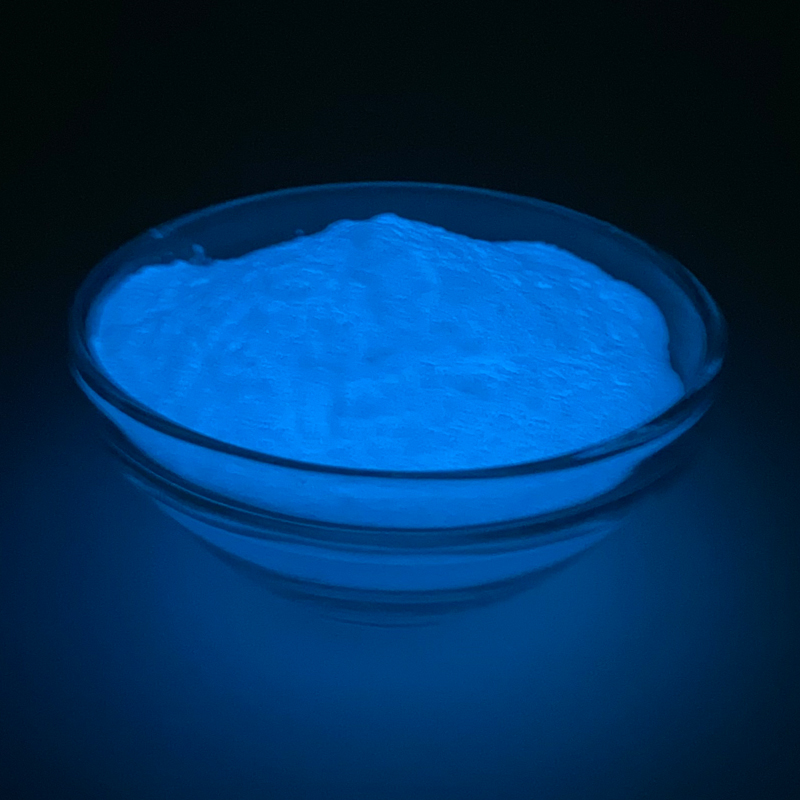- All
- Product Name
- Product Keyword
- Product Model
- Product Summary
- Product Description
- Multi Field Search
- Home
- Product
- Applications
- Soulutions
- Company
- Services
- Information
- Contact
Views: 107 Author: Site Editor Publish Time: 2021-12-09 Origin: Site
Long afterglow luminescent material is referred to as long afterglow material is a photoluminescent material. It is a class of material that absorbs energy and continues to emit light after excitation stops, and is a promising material for application.
Long afterglow material is one of the earliest research and application of materials, many natural ore itself has long afterglow luminous properties, and used to make a variety of items, such as "luminous cup", "luminous pearl" and so on.

The real written record is probably the "cow painting" painted with "long afterglow pigment" during the period of Emperor Taizong of Song Dynasty (976-997 AD), in which the cow can still be seen at night, because the reason is that the cow in this painting is painted with the luminous pigment made of oyster, the earliest record of such luminous material in the West is in 1603 when an Italian shoemaker roasted the local ore to refine gold, and got some material that glowed red in the dark, and later analyzed that the ore contained barium sulfate, and after reducing and roasting, part of it turned into barium sulfide long afterglow material. Since then, in 1764, the British used oysters and sulfur mixed with the burning of blue-white luminous material, namely calcium sulfide long afterglow luminous material.
Since 1993 Matsuzawa et al. synthesized co-doped Dy SrAl2O4:Eu study found that the remaining glow decay time up to 2000 min. subsequently, people have successively developed a series of rare earth-activated aluminate long afterglow materials, such as blue CaAl2O4:Eu, Nd and blue-green Sr4Al14O25:Eu, Dy, their long afterglow materials and their The long afterglow materials of aluminates, whose activator is mainly Eu, and the afterglow luminescence colors are mainly concentrated in the blue-green wavelength range. To this day, although the water resistance of aluminate is not very good, aluminate system long afterglow materials SrAl2O4:Eu,Dy and Sr4Al14O25:Eu,Dy still to obtain a huge commercial application, is the main long afterglow materials at this stage of research and application of concern materials.
The use of silicate as a substrate for long afterglow materials, due to silicate has good chemical stability and thermal stability, while the raw material SiO2 cheap, easy to obtain, in recent years more and more attention, and this silicate material is widely used in lighting and display field. Since 1975, Japan first developed a silicate long afterglow material Zn2SiO4:Mn,As, the remaining glow time of 30min.
Since then, a variety of silicate long afterglow materials have also been developed, such as Sr2MgSi2O7:Eu,Dy, Ca2MgSi2O7:Eu,Dy, MgSiO3:Mn,Eu,Dy, materials and performance parameters are shown in Table 1. the main activator in the silicate matrix long afterglow material is Eu2+, its luminescent color is still concentrated in blue-green light, although there are also red light silicate long Afterglow materials are reported. In addition, red long afterglow was observed in MgSiO3 co-doped with Mn, Eu, and Dy. The silicate system long afterglow material has the unparalleled advantage of aluminate system in terms of water resistance, but its performance is poorer than that of aluminate.

In addition to the above-mentioned categories of long afterglow materials, there are more studied long afterglow materials represented by sulfides ZnS:Cu,Co and CaS:Eu,Tm, which are characterized by a variety of colors, but the highest initial brightness of the afterglow is only about 40mcd/m. Moreover, the afterglow brightness of these materials decreases sharply in the first few minutes, and the effective afterglow time is very short. There are also Pr-doped titanates CaTiO3: Pr, Al. The long afterglow luminescence phenomenon is widely studied in oxidized systems, and it is noteworthy that the long afterglow phenomenon is also found in chlorine-containing oxides Ca8Zn ( SiO4 ) 4Cl2:Eu, and nitrogen-containing compounds Ca2Si5N8:Eu.
Besides, Prof. Zhengwei Pan's group has developed the ultra-long near-infrared long afterglow material Zn3Ga2Ge2O10:Cr, which has an afterglow time of up to 360h.